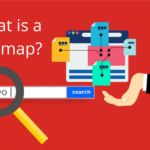What is a Sitemap?
A sitemap is an XML file that contains a list of URLs as well as additional information for each URL.
Search engines read the sitemap to crawl your website. A sitemap tells Google which pages and files are important in your website. Also, it provides valuable information about when the page was last updated and how often it usually changes.
A sitemap helps provide information about different types of content, including video, image, and news content.
A Sitemap is necessary when:
- Your website is really huge, a sitemap helps search engines find new or updated pages.
- You don’t follow effective internal linking practices, a sitemap is a great way to give crawlers information about your website pages.
- Your website is new and has only a few backlinks, a site map will act as a discovery tool.
A Sitemap may not be required when:
- Your website is “small,” i.e., a website with 500 or fewer pages.
- Your website site is well-connected internally. This implies that Google can find all of your site’s important pages simply by following links from the homepage.
- You don’t have a lot of media files (video, image) or news sites to show in search results.
Sitemap formats
Google supports the following sitemap formats.
- XML
- RSS, mRSS, and Atom 1.0
- Text
A single sitemap is limited to 50MB (uncompressed) and 50,000 URLs in all formats. If your file is large or has more URLs, you will have to divide your list into multiple sitemaps. Alternatively, you can make a sitemap index file (list of sitemaps) and submit it to Google as a single index file. Google accepts multiple sitemaps and sitemap index files.
XML –
An XML Sitemap (Extensible Markup Language) is a text file that lists all of a website’s URLs. It will include additional info on each URL, such as when it was last updated, how important it is, and whether there are any other languages variations of the URL (hreflang tag).
RSS, mRSS, and Atom 1.0 –
You can use an RSS feed to notify Google of new updates to your website if you have a large website with many pages that change regularly (for example, a news site).
The RSS feed will only contain new pages (making it faster to process), whereas your sitemap will include all of your pages.
Text –
If your sitemap only contains URLs to web pages, you can submit Google a simple text file with one URL per line.
Specifications for text file sitemaps
- Use UTF-8 encoding to encode your file.
- In the sitemap file, don’t include anything other than URLs.
- You can name the text file whatever you like as long as it ends in.txt (for instance, example.txt).
Generate a Sitemap
Choose one of the following methods to construct a sitemap once you’ve determined which URLs to include.
Allow your CMS to create a sitemap for you
If you’re using a content management system (CMS) like WordPress, Wix, or Blogger, probably, a sitemap has already been made available to search engines.
Automatic Sitemap
You have to generate a sitemap if your site has more than a few dozen URLs. There are so many free tools available for sitemap creation.
Manual Sitemap
You can manually generate a sitemap for sitemaps with less than a few dozen URLs. To do so, launch a text editor and follow the Sitemap Formats section’s syntax.
Submit your sitemap to Google
You can submit your sitemap to Google in two ways.
- Include your sitemap in the robots.txt file
- Submit your XML sitemap in Google Search Console
It is critical for SEO to have a valid sitemap that search engines can read. Creating a sitemap is simple, thanks to a number of tools that automate the process.






